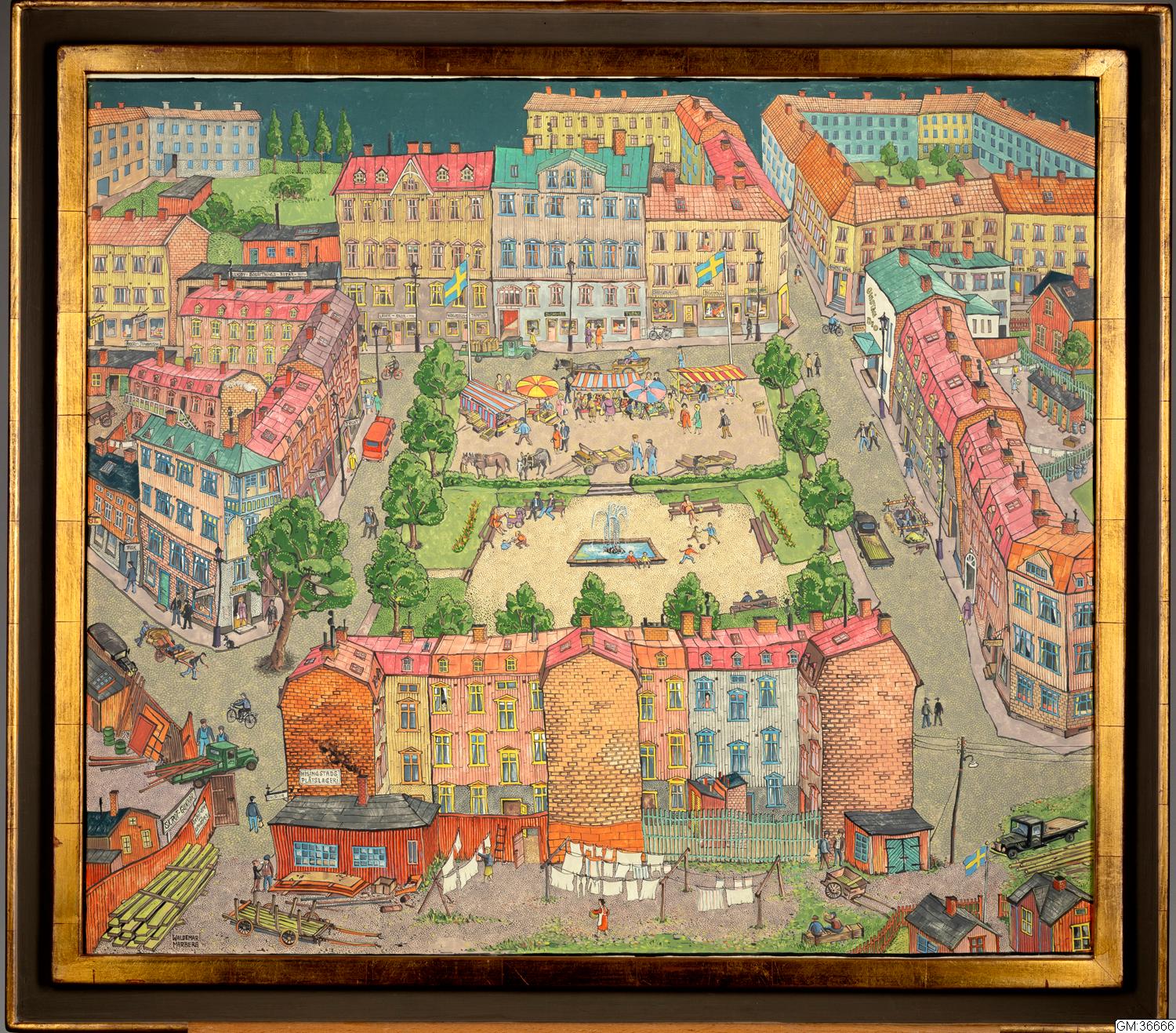Landshövdingehus
» Landshövdingehusen har väl också fått en viss klasstämpel som arbetarbostäder. Det är inte fint att bo i sådana hus.« (Svenska Dagbladet 1961)
I dag verkar göteborgarna älska sina landshövdingehus. Men för 70 år sedan var de i dåligt skick och ett problem för staden. Lägenheterna var nästan bara enrummare, många hade toalett på gården och värmdes med kakelugn. Landshövdingehusen räknades inte som moderna hem, och därför revs många av dem.
I slutet av 1800-talet hade Göteborgs befolkning växt explosionsartat. Det behövdes fler och billigare bostäder åt arbetarna. Men vad skulle man bygga? Stenhus blev för dyra, och trähus över två våningar var förbjudna eftersom de brann så lätt. Göteborgs landshövding bestämde sig för att tillåta en kompromiss: trevåningshus av trä var okej så länge bottenvåningen var av sten.
Landshövdingehusen fanns snart i hela Göteborg och fick spår av tidens trender. De senaste, från 1930-talet, är funktionella och strama, medan husen från 1880-talet har både snickarglädje, högt i tak och burspråk.
LANDSHÖVDINGEHUS - Landshövdingehus are a special type of building in Gothenburg, so called because a county governor (landshövding) approved the style: one storey of stone, two of wood.
----------
Landshövdingehus
“The landshövdingehus have also acquired a certain social class stamp as being homes for the working class. It is not proper to live in such buildings.” News paper Svenska Dagbladet, 1961.
Today Gothenburgers seem to love these buildings of flats. But 70 years ago they were in poor condition and were a problem for the city. The flats were almost all only one room, many only had a toilet in the yard, and they were heated by a tiled stove. The buildings were not considered to be modern dwellings and so many of them were torn down.
At the end of the 19th century Gothenburg’s population exploded in size. More homes and cheaper ones were needed for workers. But what type should be built? Stone buildings were too expensive and wooden ones over two stories high were forbidden because they burned so easily. Gothenburg’s governor (“landshövding” in Swedish) decided on a compromise: a three-storey wooden building was acceptable as long as the ground floor was made of stone.
Soon landshövdingehus could be found throughout Gothenburg. Their design mirrored current trends. The most recent buildings, from the 1930s, are functional and streamlined, whereas those from the 1880s have fancy trim, high ceilings and bay windows.



 Information om Stadsmuseets samlingsdatabas Carlotta
Information om Stadsmuseets samlingsdatabas Carlotta